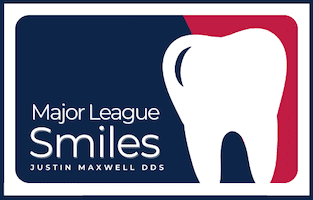A tooth extraction is a treatment of last resort when a tooth has become severely damaged or infected. Tooth extraction can seem intimidating, but understanding the process can ease your concerns. Dr. Justin Maxwell offers expert care and guidance through every step.
As part of our general dentistry treatments, extractions are performed when preserving the tooth is no longer an option. Tooth extraction is a common dental procedure. It involves removing a tooth from its socket in the bone. Dr. Maxwell performs simple tooth extractions in our Ellicott City dentist office. For most patients, this is a relatively quick procedure with minimal discomfort.

Reasons for Tooth Extraction
Dr. Maxwell will always try to save a natural tooth with a root canal procedure or another restorative treatment. However, there are cases where an extraction is the best choice for your long-term dental health.
There are several reasons you might need a tooth extraction. Severe tooth decay is a leading cause. When a tooth decays beyond repair, it must be removed to prevent further complications. Gum disease is another reason. When gum disease has damaged the structures supporting the tooth, extraction may be necessary. Overcrowding is a third reason. Sometimes, teeth need to be extracted to make room for other teeth to align correctly.
There are two main types of tooth extractions: simple and surgical. A simple extraction is performed on a tooth that is visible in the mouth and is typically straightforward. A surgical extraction is more complex and involves removing a tooth that is not easily accessible, such as a tooth that has broken off at the gum line or has not fully erupted.
The Tooth Extraction Process: what to expect.
Understanding the procedure helps alleviate any fears you might have. The process is generally straightforward.
- Initial Consultation: During the initial consultation, Dr. Maxwell will examine your mouth and review your dental history. This step helps in understanding the specific reasons for the extraction and planning the best approach.
- Examination and X-Rays: Before the procedure, a thorough examination and X-rays are necessary. X-rays provide a detailed view of the tooth and surrounding bone. This information helps in planning the extraction process and identifying any potential complications.
- Discussion of Anesthesia Options: Dr. Maxwell will discuss anesthesia options with you to ensure a pain-free experience. Local anesthesia numbs the area around the tooth, while sedation may be used for more complex extractions or for patients with dental anxiety. The procedure begins with administering the chosen anesthesia. This step ensures you do not feel pain during the extraction.
- Extraction Process: For a simple extraction, Dr. Maxwell will use tools to loosen the tooth and then remove it. For a surgical extraction, an incision may be made in the gum to access the tooth. Sometimes, the tooth needs to be broken into smaller pieces for easier removal.
Post-Extraction Care
Recovery is an essential part of the tooth extraction process. Proper care can prevent complications. After the extraction, Dr. Maxwell will provide detailed instructions on caring for the extraction site. Following these instructions is crucial for a smooth recovery.
- Pain Management: Discomfort or pain is common after an extraction. Dr. Maxwell may prescribe pain medication or recommend over-the-counter options. Follow the instructions provided to manage discomfort effectively.
- Swelling and Bruising: Swelling and bruising are normal. Applying ice packs to the affected area can help reduce swelling. These symptoms usually improve within a few days.
- Eating and Drinking Recommendations: After extraction, it is advisable to eat soft foods and avoid hot liquids. Dr. Maxwell will provide specific dietary recommendations to ensure proper healing.
While most extractions are straightforward, complications can occur. Knowing how to prevent them is key.
- Dry Socket: Dry socket is a painful condition that can occur if the blood clot at the extraction site dislodges. Following aftercare instructions, such as avoiding straws, helps prevent this.
- Infection: Infection is a risk with any surgical procedure. Keeping the extraction site clean and following prescribed medication guidelines can prevent infection.
- Bleeding Issues: Some bleeding is normal after extraction. If bleeding persists, contact Dr. Maxwell for advice. By understanding the tooth extraction process and following Dr. Maxwell’s guidance, you can ensure a smooth and successful recovery.
